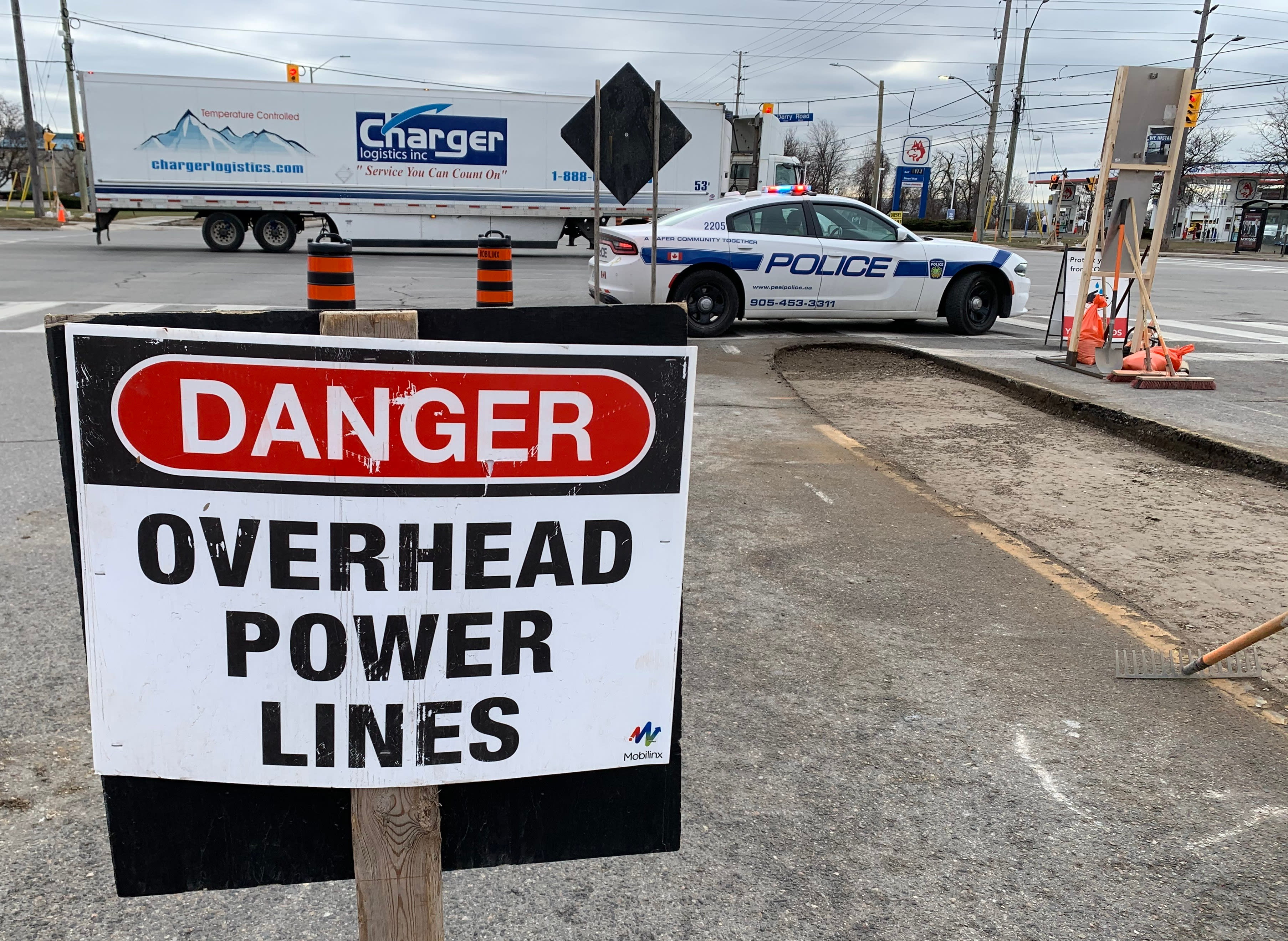How Hurontario LRT crews & first responders work together
From design to construction, safety always on top of mind for teams working on the Hurontario LRT.
Mar 12, 2021
Safety along a major urban transit line isn’t something that develops on its own – and it involves more than just the vehicles rolling along the tracks.
Robust Traffic Controls throughout the HuLRT corridor to ensure clear and safe transit, traffic, and pedestrian flows. (Metrolinx photo)
When it comes to a route like the Hurontario Light Rail Transit (HuLRT) project, it means charting good connections for local first responders. In a real emergency, seconds are counted in heartbeats, whether police and fire are responding to an incident along the route or crossing the system to get to a site far removed from the rapid transit line.
Metrolinx and HuLRT constructor Mobilinx are working closely with fire and emergency services to not only ensure that emergency vehicles can easily and safely navigate construction areas, but also Hurontario Street once the light rail vehicle (LRV) is running.
Not only does a light rail system have to have good access to emergency care providers, but the route can’t slow those life-saving crews down.
Mississauga Fire and Emergency Services Platoon Chief, Luigi Davoli, says: “Mississauga Fire and Emergency Services are strategically located throughout the city.
“Mississauga Fire and Emergency Services will not see a significant impact on emergency response time along the HuLRT corridor during the construction or once operational.”
It’s all about planning that’s been part of the route since the earliest stages.
“The design allows for emergency vehicles to mount the tracks or even use the corridor to by-pass traffic if an LRT vehicle is not present,” says Sergeant Scott Hogan of Peel Regional Police.
During an emergency, the LRV operator will be informed and will take the necessary actions to slow the LRV to allow an emergency vehicle to safely pass. With many businesses and homes converting to right in and right out access – which refers to the way traffic will need to flow, so essentially no left turns from driveways – considerations for emergency vehicle access were discussed early in the planning and design phase.
A Peel Regional Police officer patrols an intersection to ensure public safety near active construction sites. (Metrolinx photo)
DIGITAL MODEL
Design teams thoroughly review and analyze the impacts of the LRVs on traffic safety at intersections and road crossings along the alignment. They use a software called ‘AutoTurn’, which provides a simulation of the path in which vehicles will travel when making turns within a digitally created mock-up that will represent the future conditions. This analysis is called a ‘swept path’ and its purpose is to ensure that specific vehicles can manoeuvre through specific routes. It calculates all the paths in which the vehicle could travel while turning.
By creating virtual roads and intersections, the team can better assess how the LRVs will operate and learn how larger vehicles like a firetruck negotiate maneuvers, including a U-Turn, at an intersection. The swept path also provides a visual to see whether there would be any conflicts when a vehicle is turning.
The design team also calculates the ‘Track Clearance Envelope’. This is the information required to set the alignment of the guideway barrier curbs, which will be on either side of the tracks, and are required to eliminate the risk of lateral collisions.
NO LEFT TURN
When the HuLRT is operational, commuter vehicles will be prohibited from making left turns at non-signalized intersections, including driveways. This is done to minimize the risk of a collision between vehicles and LRVs. Signage and traffic signals will be visible to direct drivers, pedestrians, and cyclists away from the tracks, for their safety and the safety of others.
Fire and Emergency Platoon Chief of Operations, Davoli, knows his men and women will be able to get to where they need to be.
“Construction is an ongoing activity in the City of Mississauga and does not affect our response time in a significant way,” he explains.
While every transit system prides itself on great timing, top safety and easy movement, this is all especially true when planners look to the relationship of a line to first responders who must get where they need to be.
by Erika D’Urbano Communications senior advisor
